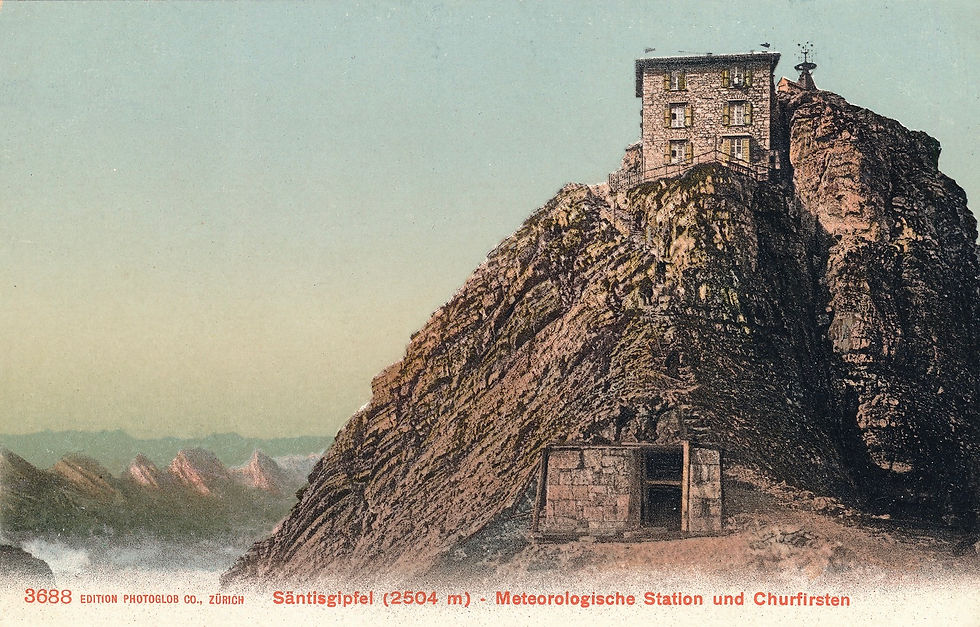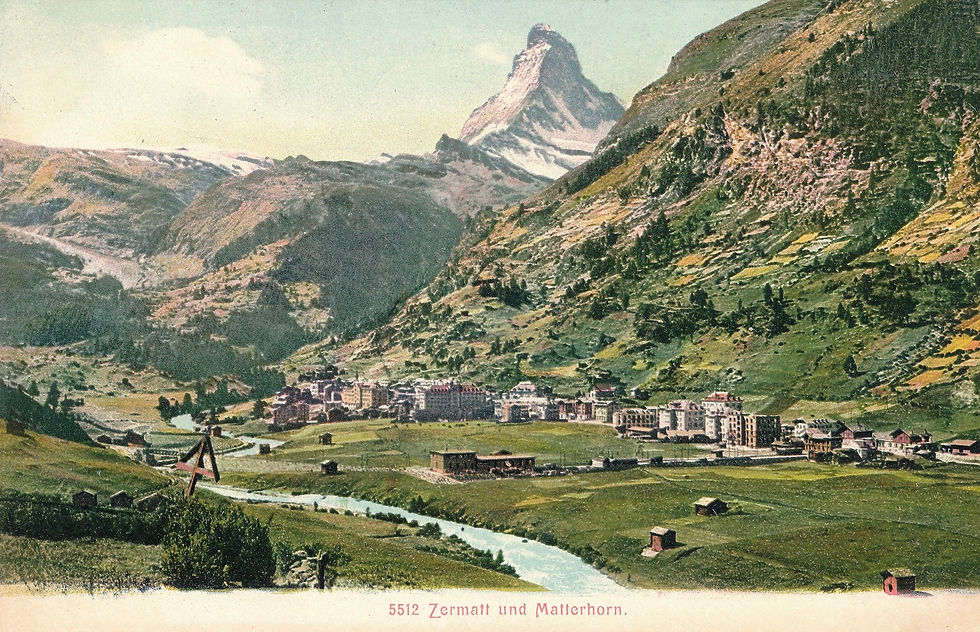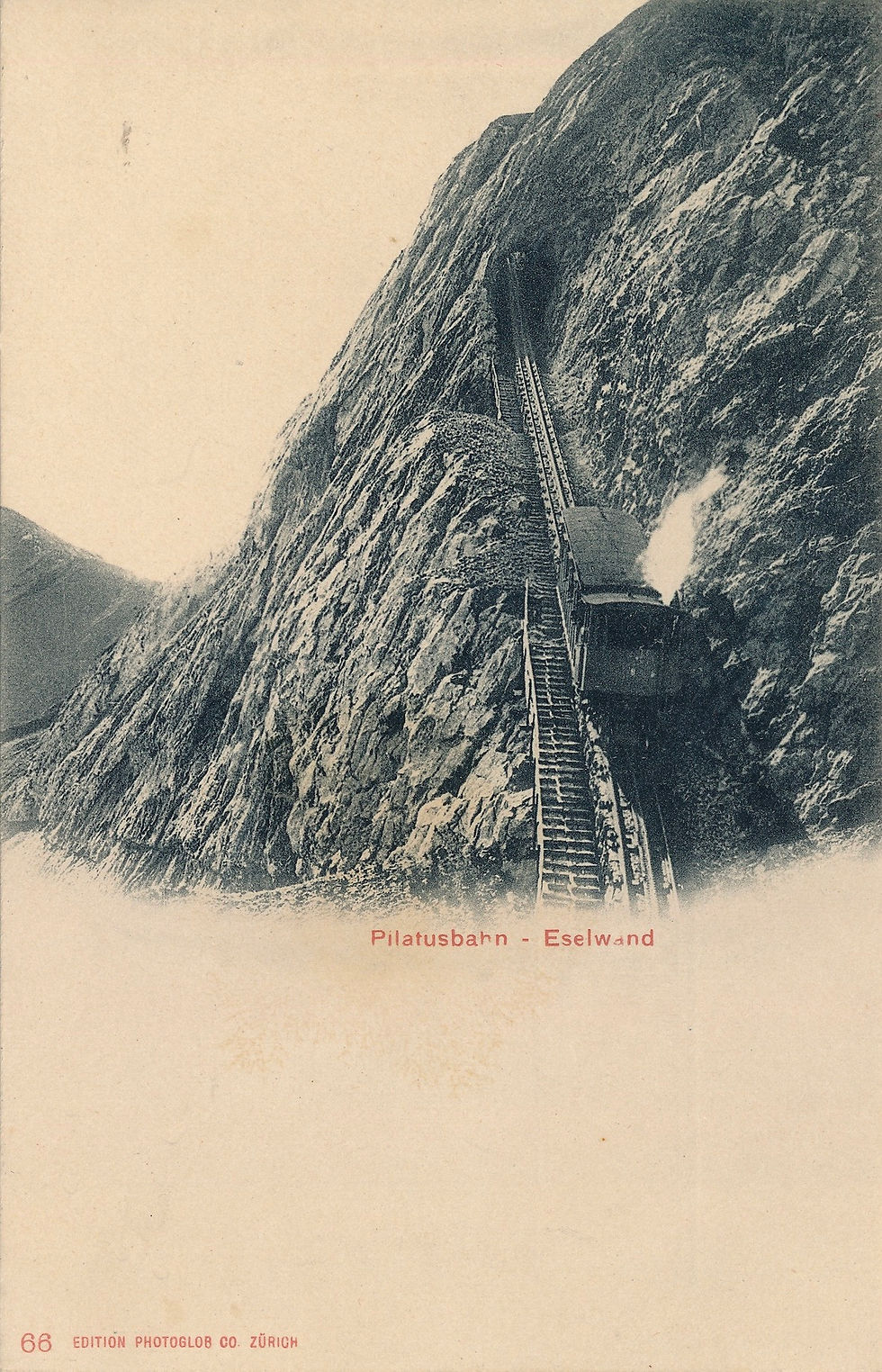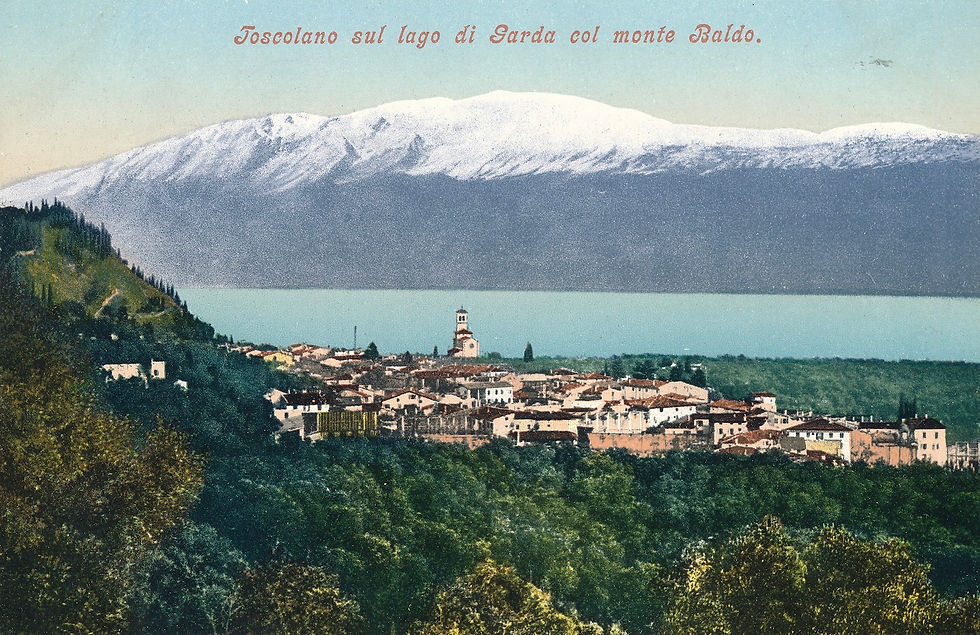I published a story in February of this year about the cabinetmaker, building designer and construction technician Kaspar Ritter from Egg, Austria. At that time I pointed out that the newlyweds Kaspar Ritter and Margarethe Natter from Egg Mühle went on a honeymoon in 1906.

This is what the 'greeting cards' looked like back then. 30 x 40 cm and the insignia in stainless steel version.
The Villa Ritter in Egg, Mühle.

The decisive factor for planning the trip was certainly the World's Fair in Milan in 1906. Ritter had already visited the World's Fair in Paris in 1889.
The Ritter couple bought postcards from all destinations and brought them home. So picture postcards in the true sense of the word, not postcards. Kaspar Ritter, who was interested in architecture and technology, probably used these cards for his later studies.
People traveled by rail. Some lines were already electrified, others were operated with steam locomotives. Otherwise, one was dependent on the good old stagecoach.
Around the turn of the century, the first colorful picture postcards appeared. Lithographic offices repainted black-and-white photographs with color.
It took until about 1896 for the big breakthrough of picture postcards, and they did not become really popular outside the German-speaking countries until a few years later. One reason for the increasing popularity of the cards was the use of chromolithography, which made it possible to print colorful cards instead of just black and white. Another reason was the increase in tourism that resulted from mass transportation.
Unfortunately, the clear structures of the photo were often lost in the color processing.
We now put ourselves in another time and go on a honeymoon together with the Ritters.
Next stop: St. Gallen, Canton of St. Gallen.




Teufen, Canton Appenzell Ausserrhoden.




Next stop: Chur, Canton Grisons.


Next stop: Arosa, Canton Grisons.







Next stop: St. Moritz, Grisons.



Next stop: Zurich, Canton of Zurich.


Next stop: Baden, Canton Aargau.





Next stop: Bern, Canton of Bern.




Next stop Grindelwald: Canton Bern.

Next stop: Lauterbrunnen, Canton Bern.


Next stop: Zermatt, Canton Valais.











Next stop: Lucerne, Canton of Lucerne.



The Pilatusbahn is a rack railroad in Switzerland and the steepest of its kind in the world. It runs from Alpnachstad to Mount Pilatus and is operated by Pilatus-Bahnen AG.

In Lucerne, the success of the Vitznau-Rigi Railway, which initially paid out a return of 15%, aroused the desire to start with a rack-and-pinion railroad up the local mountain Pilatus. A first concession application was submitted by the credit institute on April 22, 1873. However, the problem with the route from Alpnachstad to the summit was that the 25% gradient achievable with a Riggenbach rack was not sufficient. In 1885, Eduard Locher made a proposal with seven tunnels, narrower track and steel anchors fixed deep in the ground to hold the tracks in place. This proposal allowed a gradient of 38% on average and 48% maximum on masonry subgrade.

Based on this proposal, a realization could be started in April 1886. The line was built in sections. The construction was started in the valley. The granite stones were transported to the next construction section on bogies with loading platforms for the transport of goods. The first of the ordered steam locomotives were used for this purpose. Thus, the track and rail structure as well as the machines were already tested under load during the construction phase. The car bodies for passenger service were not mounted on the bogies until the end. The first passenger train journey took the members of the Pilatusbahn AG board of directors up the mountain on August 17, 1888. Steam car No. 7 was shown at the 1889 World Exhibition in Paris.

The line was opened on June 4, 1889, and the railroad ran in steam mode, for which a railcar with a boiler mounted transversely to the direction of travel was constructed. This was necessary so that fuel and water remain largely stable despite varying gradients. Initially, based on a census of 3,000 climbers per year, transport capacity was created for 288 people per trip, and in the first ten years an average of 34,400 people were transported to the mountain hotel. The success of the Pilatus Railway in its first years of operation was reflected in a dividend of 7% on the company's capital. This gave new impetus to the construction of other mountain railroads, which had been stalled for over a decade. For example, Eduard Guyer-Zeller and Eduard Locher were able to realize the Jungfrau Railway project. Railcar number 10 from the early days of the Pilatus Railway is preserved in the German Museum in Munich.





Next stop: Brunnen on Lake Lucerne, Canton Schwyz.






Next stop: Immensee, Canton Schwyz.

The construction costs of the route network of the future Gotthard Railway Company were estimated at 187 million francs in 1869. The largest part (54.55%) of the funds had to be raised from the international capital market, Italy subsidized 24.05%, Germany and Switzerland 10.7% each. To raise the 102 million francs on the capital market, a financial consortium was formed under the leadership of German banks. It consisted of a German, Italian and Swiss group, each of which had to raise 34 million francs.

After the Semmering Railway (1854), the Brenner Railway (1867) and the Mont-Cenis Railway (1871), the Gotthard Railway was the fourth, but also the boldest Alpine crossing. Its construction was started in 1872 by the Gotthard Railway after long discussions about the right route and a state treaty finally concluded in 1869 with the Kingdom of Italy and in 1871 with the German Empire (Gotthard Treaty of 1871). Italy contributed 55 million, Germany 30 million francs to the capital of the private Gotthard Railway Company.

From May 22 to May 25, 1882, the inauguration ceremonies took place in Lucerne and Milan. At that time, the 15,003-meter Gotthard summit tunnel was the longest railroad tunnel in the world, surpassed only in 1906 by the Simplon Tunnel.
On June 1, 1882, the Gotthard Railway was put into operation according to schedule, at that time still single-tracked. The access lines Lucerne-Immensee and Thalwil-Arth-Goldau were not opened until 1897, which is why the trains of the Gotthard Railway initially ran from Lucerne via Rotkreuz to Immensee.











Next stop: Lugano, Canton Ticino.









Next stop: Locarno, Canton Ticino.




Next stop. Como, Lombardy.

Next stop: Milan, Lombardy.


The World's Fair Milan 1906.

The 1906 Milan World's Fair (it: Esposizione internazionale del Sempione), recognized by the Bureau International des Expositions (BIE), took place between April 28 and November 11, 1906, on the occasion of the opening of the Simplon Tunnel. 50 countries and 27,000 exhibitors participated in the exhibition. The exhibition is said to have attracted between 7.5 and 10 million visitors.
The exhibition area, totaling 100 hectares, consisted of a green area behind the Castello Sforzesco, today's Simplon Park, and the current area of the Milan Fair, about 3 kilometers away. An electric elevated railroad connected the two exhibition areas.


The theme of the World Exhibition in Milan was traffic. Three weeks after the opening of the exhibition, the approximately 20 km long Simplon Tunnel was put into operation on May 19, 1906. It was originally scheduled for 1905, but had to be postponed for a year due to delays in the construction of the tunnel.
The Milan exhibition featured a balloon park and a section dedicated to aviation, where several airships were on display. A pavilion was devoted to the emerging automobile and a section to the railroad.
The hygiene exhibition was also significant, with a wide selection of medical exhibits. The Applied Arts Pavilion featured mainly Italian artists and designers.


On April 28, 1906, the Acquario Civico di Milano was opened as part of the World's Fair. The Aquarium is the only surviving building from the 1906 World's Fair and is located in Simplon Park.
On August 3, a fire broke out and destroyed several buildings and pavilions, including the Pavilion of Applied Arts. In a period of 40 days, the premises were rebuilt and reopened by King Victor Emmanuel III.









Next stop: Venice, Veneto.








Next stop: Riva, Lake Garda, Trento.







Next stop: Merano, Tyrol.


Next stop, Bolzano, Tyrol.









Next stop: Innsbruck, Tyrol.





Next stop: Hall, Tyrol.


Next stop: Kundl, Tyrol.


Next stop: Kitzbühel, Tyrol.

Next stop: Neuschwanstein Castle, Bavaria.


Next stop: Munich, Bavaria.


Next stop: Lindau, Bavaria.


The collection of the Ritter family is administered by the descendants (family Simma, Egg, Kammern). I would like to take this opportunity to thank them for allowing me to copy the postcards.
I have also copied many used postcards which show that Ritter had business contacts from Vienna, via Zagreb, Budapest, Trieste, Nuremberg, Augsburg, Berlin to Jerusalem and New York.
The couple Ritter was childless and liked to travel also in the following years. Often together with Leo Simma, the brother of the late brother-in-law Löwenwirt Kaspar Simma. There are countless beautiful postcards from these trips, which are kept in the Bregenzerwald archive.
All blog posts can and should be shared so that many people can follow the post.
If you register on the home page, they will always receive a short email when more posts are published.
In addition, you can then comment at the end of the posts, which I will be happy to answer.
All my blog posts are free of charge. But I would be very happy about a visit in my little bar in Egg, Großdorf.
Klaus Riezler.












Comentários